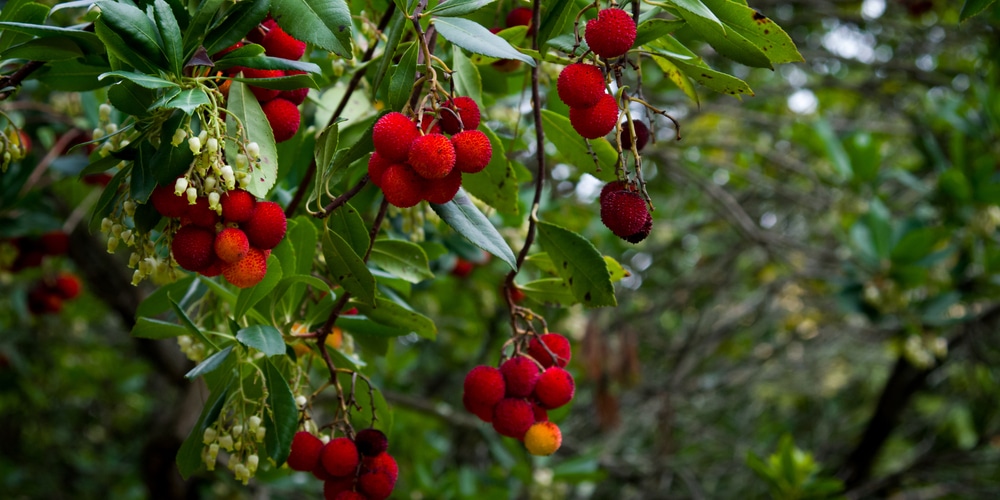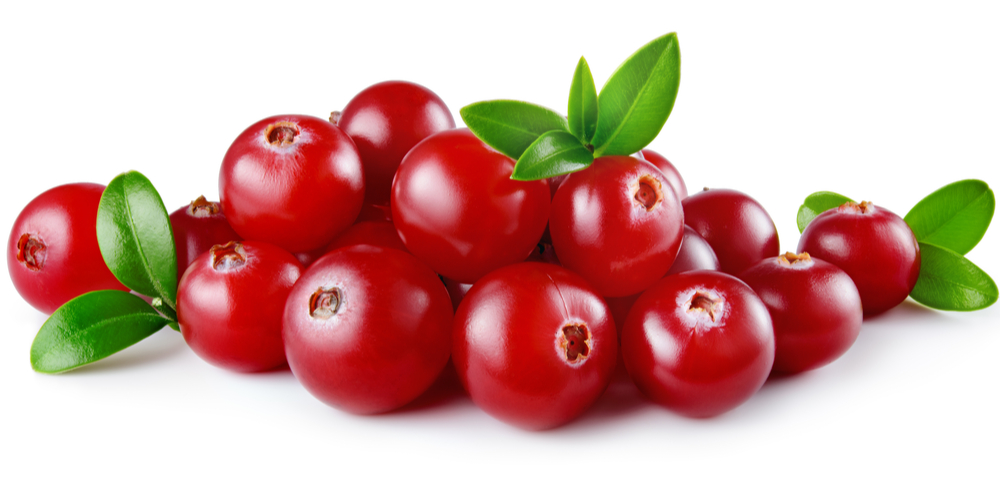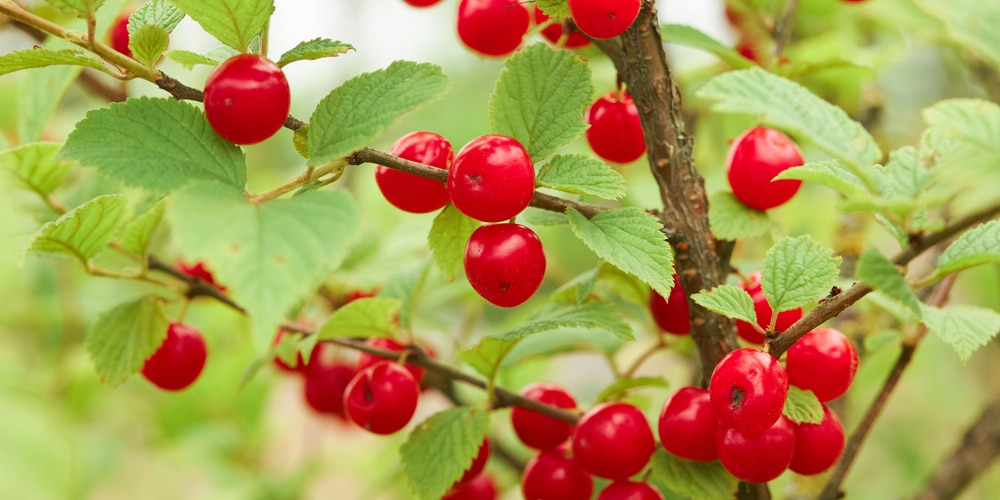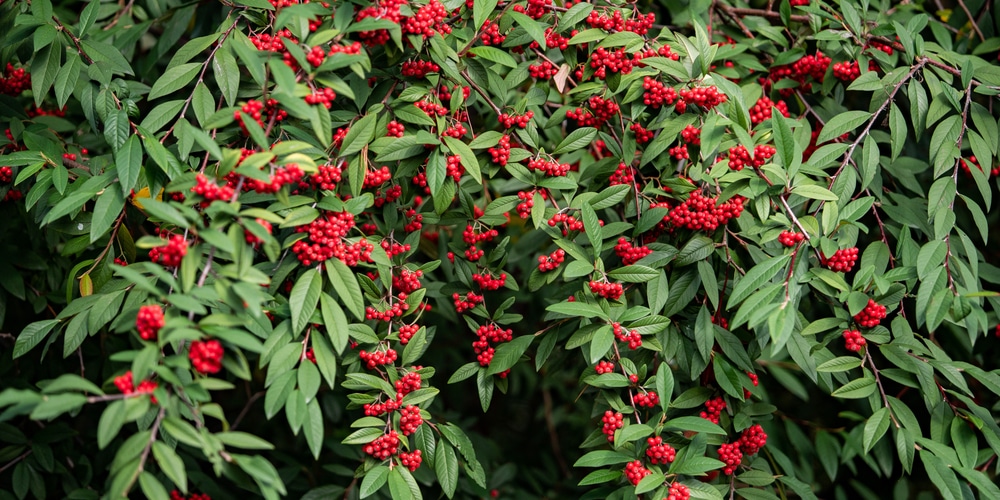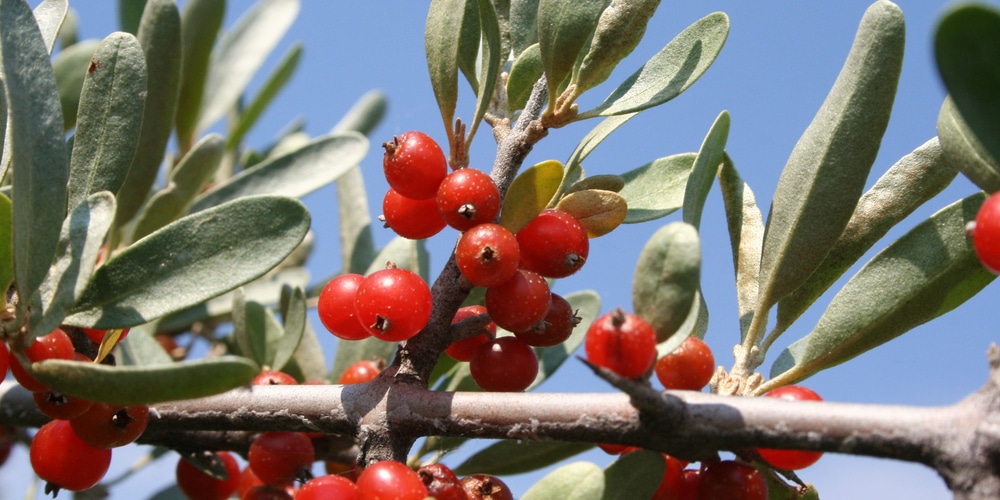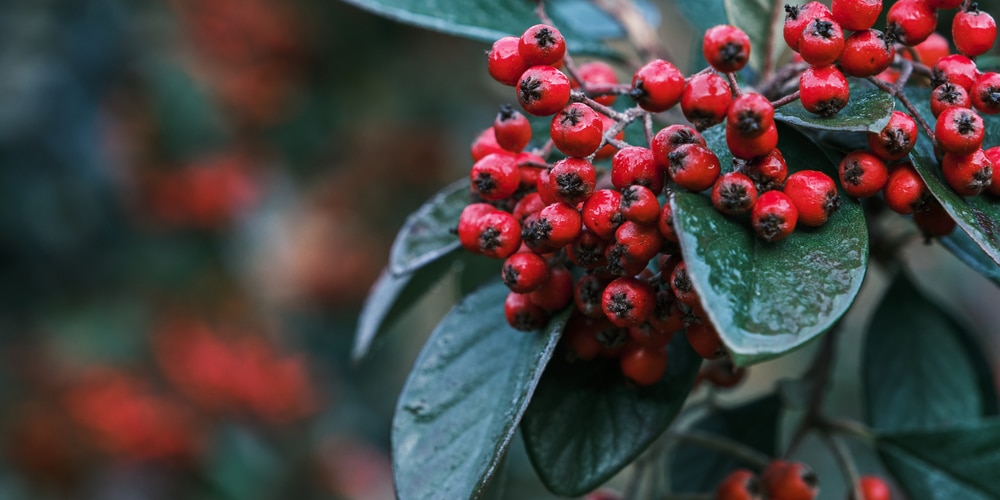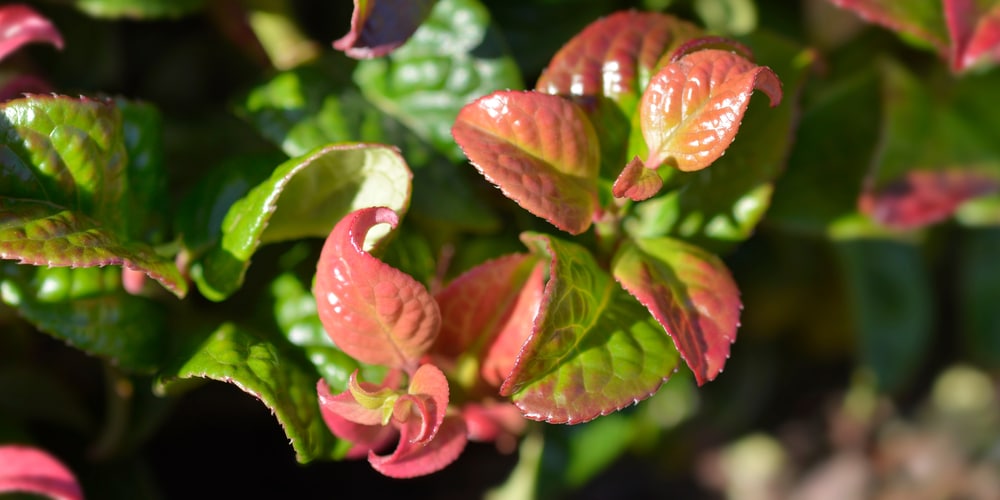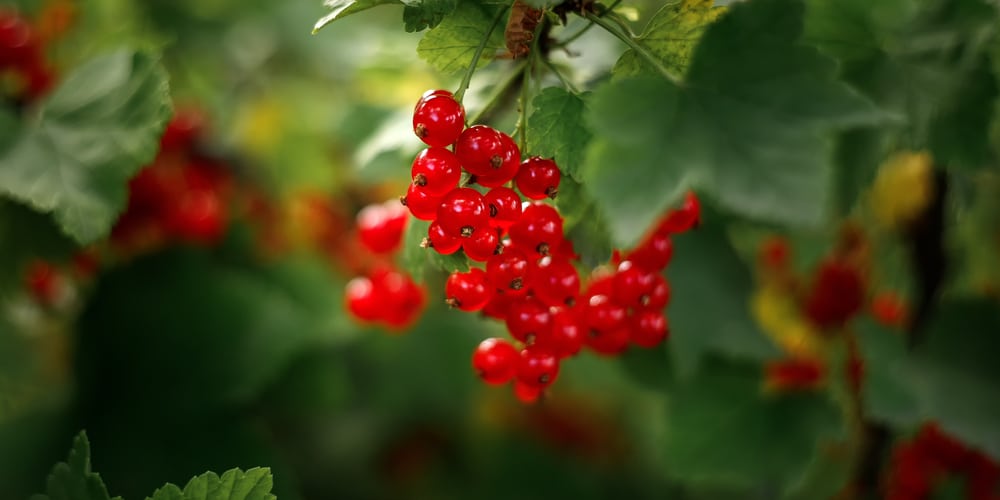rees that produce fruits are favorite conversation topic among gardeners and homeowners. If you want to join in on the fun, look no further- here are 12 trees with red berries.
Trees with red berries
Strawberry Tree
When one thinks of red berries they usually assume strawberry, but the only problem is that they’re small plants. However, there’s a thing such as a strawberry tree and it has red berries that offer a sweet and refreshing taste.
Strawberry trees are evergreen shrubs and are characterized by small, spiky and red fruits. You can collect them in fall and grow them if you’re within USDA zones 7 to 10. Place them in full sun and these species can grow up to 15 feet tall.
Highbush Cranberry
Highbush Cranberries produce red, bright and shiny drupes with a tangy flavor that’s similar to cranberries. You can eat them fresh or turn them into a meat sauce for added depth.
Bright green foliage makes the red berries stand out and serves as a beautiful attraction to your garden. The shrub has arching stems and red-brown bark. Plant highbush cranberries in a sunny spot and make sure to give it plenty of water during the growing season.
Nanking Cherry
A deciduous shrub that reaches up to 10 feet in length, the Nanking Cherry Tree is also known as Chinese bush cherry, mountain cherry and downy cherry. Red drupes form daintily along the stems and can be picked to eat in the summer.
Nanking Cherry grows quickly when you meet its requirements. It’s great as a windbreak, a privacy screen or along borders and gets along well with other plants and trees. The berries can be made into juice, wine or jam, among others.
Red Elderberry
Red Elderberries are large shrubs that produce clusters of bright red berries. Before the fruit stage you’ll want to check out the white flowers that smell like fresh lemons come spring or early summer.
It’s worth noting that you have to cook red elderberries first before eating them. As an ornamental red-berried specimen the elderberry is hard to beat.
Buffalo Berry
One way to distinguish a buffalo berry is to check and see if it has white dots on it. The fruit can be picked and made into a jam, jelly or pie.
Buffalo Berry trees have long and oblong-shaped leaves that complement the fruits well. It does very well in full sun and in a moist and organic-rich environment.
Mulberry Tree
The Mulberry Tree is a very popular tree that needs no introduction. It’s a deciduous tree that sheds its leaves come winter and grows them back at the first sign of spring.
Aside from red mulberries this tree species is known to produce white and black fruits as well. The medium-sized tree has a unique, heart shaped foliage and can grow in zones 4 to 9. Make sure you plant it in a sunny location and the tree does the rest.
Hawthorn Tree
Hawthorn trees are widely spread across the world, which speaks volumes about its durability and ease of care. You’ll know a hawthorn tree by its spiral-patterned leaves, short trunk and spread-out branches, as well as the red fruit that appear to be berries but are more like apples at closer inspection.
Hawthorn berries can be eaten but its seeds must be avoided. Hardiness zones vary per species, but almost all of them want full sun and constantly moist medium.
Peruvian Pepper
An evergreen tree that’s given the names ‘false pepper’ and ‘American pepper’, this should give you an idea of how the red berries taste like. Peruvian Pepper likes warm climates and can be found growing in Australia and South Africa. In the US, it’s grown in Arizona, California, Texas, Florida and Louisiana.
Peruvian Pepper thrives under the hot sun and can survive infrequent watering. The red berries may be eaten but may cause a bit of stomach discomfort.
Cotoneaster
Cotoneaster makes the list of trees with red berries, but what you should know is that the fruits are not safe to eat. The varieties can range from small to large and grow between a foot up to 16 feet in height.
The leafy shrub produces clusters of bright red berries that look like cranberries. The contrast of the deep olive green foliage is certainly the highlight of taking care of this tree.
Hobble Bush
Hobble bushes are perennial shrubs and sport red berries that eventually turn black. It’s native in the eastern part of the US and can be found in swamps, river banks and forests. It has emerald-green leaves that can grow between 4 to 8 inches long and have serrated edges.
The shrub likes partial sun and plenty of watering, especially during hotter days. The fruit berries can be harvested and have a sweet taste that’s similar to raisins. Wait a bit more, and in spring the berries are said to be more delectable.
Redcurrant
Redcurrants belong in the same species as gooseberry and are vigorous berry producers. A single shrub in your yard can mean pounds of bright red berries that have a tart taste.
The bushy plant can survive in full sun but it does better in partial sun and shade. What it needs is a rich soil packed with nutrients and organic matter, so you should constantly feed with fertilizer and mulch with manure, vermicast and similar content.
The red berries of a redcurrant tree can be collected and made into a meat sauce or eaten as a fruit.
Red Gooseberry Bush
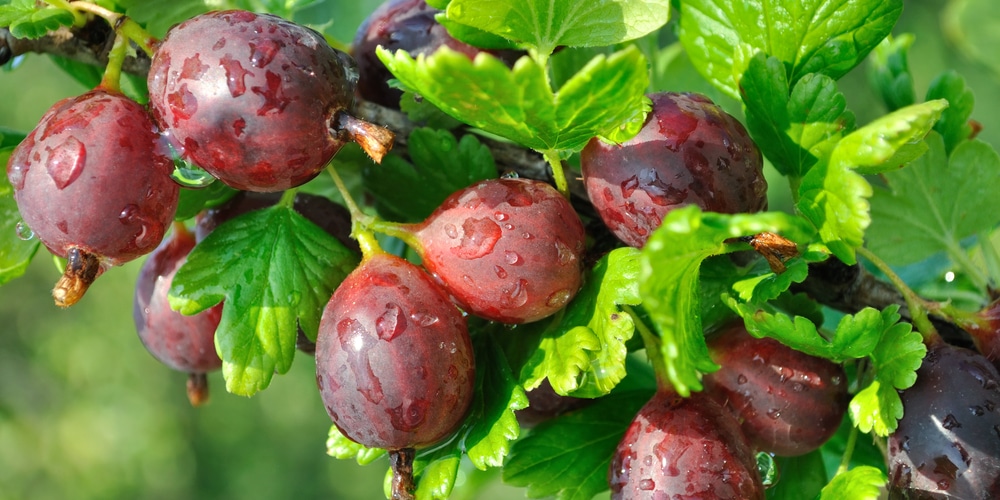
Not all gooseberries produce green berries- some, like the red gooseberry bush sprouts red striped berries come summertime.
The red berries sport an oval shape and have a tart taste. The shrub prefers colder climates and is frost hardy up to negative 40 degrees C. You can plant in spring when the risk of frost has passed to get a headstart over the growing season.
Also, gooseberries prefer a rich and well-draining soil with lots of organic components. Gooseberries can be harvested when ripe and full-colored.
Related Article: Trees That Start with H
